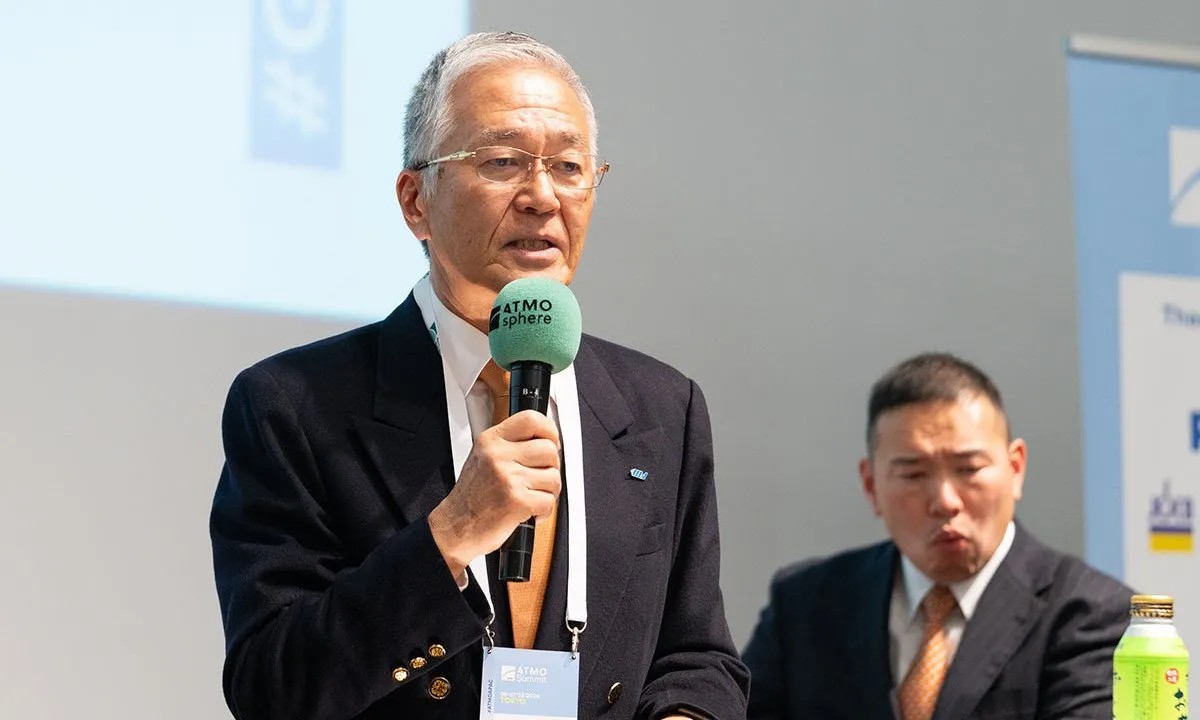Japanese frozen tuna warehouse with new air and R717/CO2 refrigeration systems cuts summer energy use by 15% over R22 and R23
April 02, 2024

Japanese frozen tuna warehouse and processor Marine Access has seen a 15% energy savings by replacing R22 and R23 refrigeration systems in two warehouses with refrigeration systems using air, ammonia (R717) and CO2 (R744).
“With R22 and R23 having a combined GWP of around 15,000, moving to non-f-gas freezers was our environmental initiative,” said Ippei Murakami, Marine Access Director and Advisor. “We also wanted energy savings, with the facility requiring a nominal refrigeration capacity of 12,000TR [42,202kW] at ultra-low −60°C [−76°F] temperatures to maintain tuna freshness.”
Details of the company’s refrigeration change out and subsequent energy and CO2e emission savings in its warehouse and processing facility in the town of Yoshida, Shizuoka Prefecture, were presented by Murakami at the ATMOsphere APAC Summit 2024.
The event, held February 6–7 in Tokyo, was organized by ATMOsphere, publisher of Ammonia21.com.
Marine Access’s facility uses three separate refrigeration systems for different warehouses and processing facilities, plus an air conditioner for process floor dehumidification.
The facility replaced two refrigeration systems with support from the Japanese Ministry of the Environment’s natural refrigeration equipment installation subsidization project. According to Murakami, replacing the production line freezer with a refrigeration capacity of around 1,000TR (3,516.9kW) will require “more thought” since it will interrupt operations.
Japanese OEM Mayekawa refrigeration equipment used in the retrofit included:
- Pascal Air, an air cycle refrigeration system, with each unit providing 9.1TR (32kW) refrigeration capacity at −60°C.
- NewTon, a low-charge ammonia/CO2 cooling system providing 74.9TR (263.4kW) refrigeration capacity at −30°C (−22°F).
- Copel, a transcritical CO2 condensing unit that provides 8.9TR (31.3kW) refrigeration capacity at −30°C.
A Mayekawa CHRIS desiccant dehumidifier using a CO2 heat pump replaced the 40-year-old processing plant’s air conditioner.
8,000TR warehouse
In its warehouse used for tuna storage that requires a nominal refrigeration capacity of 8,000TR (28,134.8kW), Marine Access replaced R22 and R23 systems by installing seven Pascal Air units and a NewTon unit to provide front chamber cooling.
“Based on actual measured data from July 2021 and July 2022, we had a summer power consumption reduction of 15%,” Murakami said. “An equipment comparison indicates the refrigeration system change reduces CO2e emissions by 2,603.9 metric tons annually.”
According to its product page, the Pascal Air unit eliminates internal evaporators, air coolers and fans.
“The system only requires 1.5m (4.92ft) of cooling duct to be placed inside the warehouse,” Murakami explained. “While operating at ultra-low temperature, you can replace the freezer; that is significant when you have the equivalent of billions of yen of frozen fish.”
“Maintenance [of the air unit] is quite easy,” he added. “The only need is duct cleaning or defrosting, but it’s so short at 1.5m that we manage that internally.”
The NewTon unit’s product page indicates that it uses a semi-hermetic interior permanent magnet motor on an ammonia screw compressor, providing a roughly 30% energy savings over R22. The ammonia stays in the machine room while CO2 circulates into the cold storage area.
3,000TR warehouse
In the smaller warehouse requiring a nominal refrigeration capacity of 3,000TR (10,550.6kW), Marine Access replaced the R22 and R23 systems with three Pascal Air units and a Copel CO2 condensing unit to provide front chamber cooling.
“The effect of the COP was even bigger than we expected,” noted Murakami. “Measured data from July 2022 and July 2023 showed a summertime energy savings of 20%.”
The equipment comparison indicates the new refrigeration systems reduced CO2e emissions by 696.4 metric tons annually.
Mayekawa began the development of the Copel CO2 condensing units in 2019. The product’s webpage indicates that the unit is for small- to medium-sized frozen and chilled storage and freezing/cooling processes.
Process floor dehumidification
Replacing the 40-year-old air-conditioning system – its refrigerant was not specified – in the processing facility with a CHRIS desiccant dehumidifier using a CO2 heat pump allowed dehumidification even in the low-temperature conditions, reducing the process floor humidity by up to 50% according to before and after pictures shown by Murakami.
The CO2 heat pump, developed in 2023, supplies the heat required for adsorbent regeneration. CHRIS reduces electrical power consumption by 75.5% compared to traditional dehumidifiers using an electric heater, according to Kazuhiro Hattori, General Manager of the Research and Development Division for Mayekawa.
“The new system contributes to safe food processing with the condensation progression well managed,” Murakami said, adding that the operating efficiency is high with the energy savings provided by the heat pump.
“We replaced the equipment to meet our environmental initiatives, but I see a lot more positive aspects than we expected, including energy savings,” said Murakami.
In addition, last January, Marine Access added a 4,880m2 (51,667ft2) solar panel system, which in its first year supplied 759 kWh of electricity. Murakami estimated that the system provides about 13% of the electricity used by the facility.


